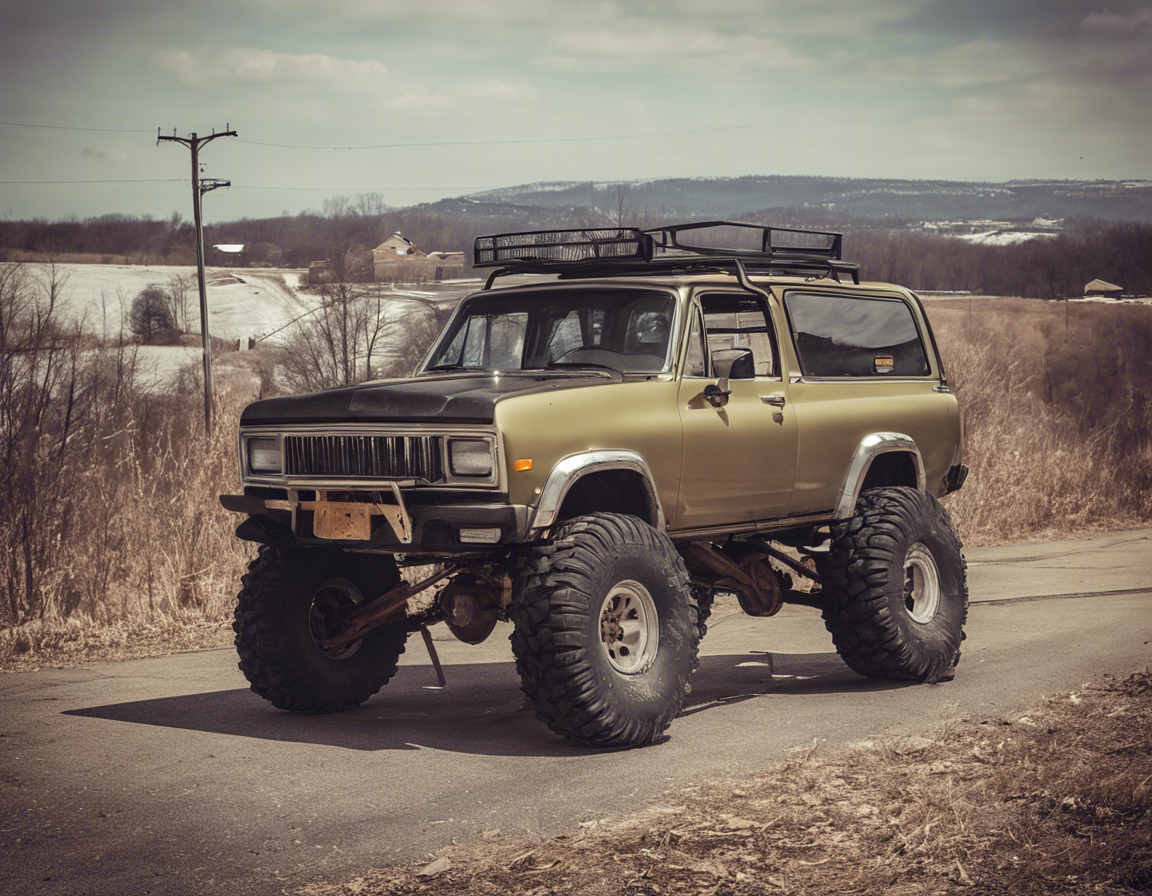Explore the Thrills of Wheeling: A Beginner’s Guide
Are you ready to dive into the world of off-roading and explore the thrills of wheeling? If you have a thirst for adventure and love the great outdoors, then off-roading might just be the perfect hobby for you. However, before you hit the trails, it’s essential to understand the basics of wheeling to ensure a safe and enjoyable experience.
What is Wheeling?
Wheeling, also known as off-roading, is the activity of driving a vehicle on unsurfaced roads or tracks, often in remote or rugged areas. It involves navigating through challenging terrain such as mud, rocks, sand, and steep inclines. Off-roading can be done in various vehicles, including trucks, SUVs, ATVs, and motorcycles, each offering a unique experience.
Getting Started with Wheeling
If you’re new to wheeling, here are some essential tips to help you get started on the right track:
Choosing the Right Vehicle
Before you hit the trails, it’s important to select a vehicle that is suitable for off-roading. Look for a vehicle with four-wheel drive capabilities, good ground clearance, and off-road tires. Popular choices for off-roading include trucks like the Jeep Wrangler, Toyota Tacoma, and Ford Bronco.
Safety First
Safety should always be your top priority when off-roading. Make sure to wear your seatbelt at all times, follow posted speed limits, and never drive under the influence of alcohol or drugs. It’s also a good idea to let someone know your off-roading plans and bring along essential safety equipment such as a first aid kit, fire extinguisher, and recovery gear.
Essential Gear for Off-Roading
To ensure a safe and enjoyable off-roading experience, here are some essential gear and equipment that you should have:
Recovery Gear
Recovery gear is crucial when off-roading, as you may encounter challenging terrain that could get your vehicle stuck. Items such as a tow strap, D-ring shackles, and a recovery winch can help you get out of sticky situations.
Off-Road Tires
Investing in a set of high-quality off-road tires can significantly improve your vehicle’s traction and performance on challenging terrain. Look for tires that are designed for off-roading and provide excellent grip in mud, sand, and rocky conditions.
Lift Kit
A lift kit can increase your vehicle’s ground clearance, allowing you to navigate over larger obstacles without causing damage to the undercarriage. Lift kits come in various sizes, so choose one that suits your off-roading needs.
Skid Plates
Skid plates are protective armor that shields the undercarriage of your vehicle from damage caused by rocks, stumps, and other obstacles. They are essential for off-roading in rugged terrain to prevent costly repairs to your vehicle’s vital components.
Tips for Successful Off-Roading
To make the most of your off-roading adventures, here are some tips to keep in mind:
Know Your Limits
It’s important to know your vehicle’s capabilities and your own driving skills when off-roading. Start with easier trails and gradually work your way up to more challenging terrain as you gain experience.
Stay on Designated Trails
Off-roading can have a significant impact on the environment, so it’s essential to stay on designated trails to minimize damage to vegetation and wildlife habitats. Respect trail closures and avoid creating new paths or shortcuts.
Pack Essentials
Make sure to pack essential items such as water, food, a map, GPS device, and extra clothing when off-roading. Be prepared for unexpected situations and always carry a fully charged cell phone for emergencies.
Practice Tread Lightly Principles
Follow the Tread Lightly principles, which promote responsible off-roading practices to minimize your impact on the environment. Stay on designated trails, avoid disturbing wildlife, and pack out all trash to leave the area pristine for future off-roaders.
Frequently Asked Questions (FAQs)
-
Q: Can I go off-roading in a regular car?
A: While some off-roading can be done in a regular car on easy dirt roads, it’s recommended to use a vehicle with four-wheel drive and good ground clearance for more challenging terrain. -
Q: Do I need special insurance for off-roading?
A: It’s essential to check with your insurance provider to ensure that you have coverage for off-roading activities, as many standard policies may not cover off-road accidents. -
Q: Are off-road tires necessary for wheeling?
A: Off-road tires are highly recommended for off-roading, as they provide better traction and performance on challenging terrain compared to standard tires. -
Q: How do I find off-roading trails near me?
A: You can use online resources such as off-road trail databases, apps, and forums to find off-roading trails near your location. Local off-roading clubs are also a great source of information. -
Q: What should I do if my vehicle gets stuck while off-roading?
A: If your vehicle gets stuck, remain calm and assess the situation. Use your recovery gear, such as a tow strap or winch, to safely extract your vehicle from the obstacle. If you’re unable to free your vehicle, seek help from other off-roaders or a professional towing service. -
Q: Is off-roading legal on public lands?
A: Off-roading regulations vary by location, so it’s important to check with local authorities or land management agencies to ensure that off-roading is permitted in the area. Always respect trail closures and designated off-roading areas.
Conclusion
Off-roading or wheeling is an exhilarating outdoor activity that allows you to explore remote and rugged terrain while experiencing the thrill of off-road driving. By following the tips and guidelines outlined in this beginner’s guide, you can enjoy a safe and rewarding off-roading experience. Remember to prioritize safety, respect the environment, and have fun exploring the great outdoors on your off-road adventures!
